Buongiorno!
Are you considering a trip to Italy in search of La Dolce Vita? Or, are you just in search of something for your sweet tooth? La Dolce Vita is an Italian expression meaning the sweet life or the good life.
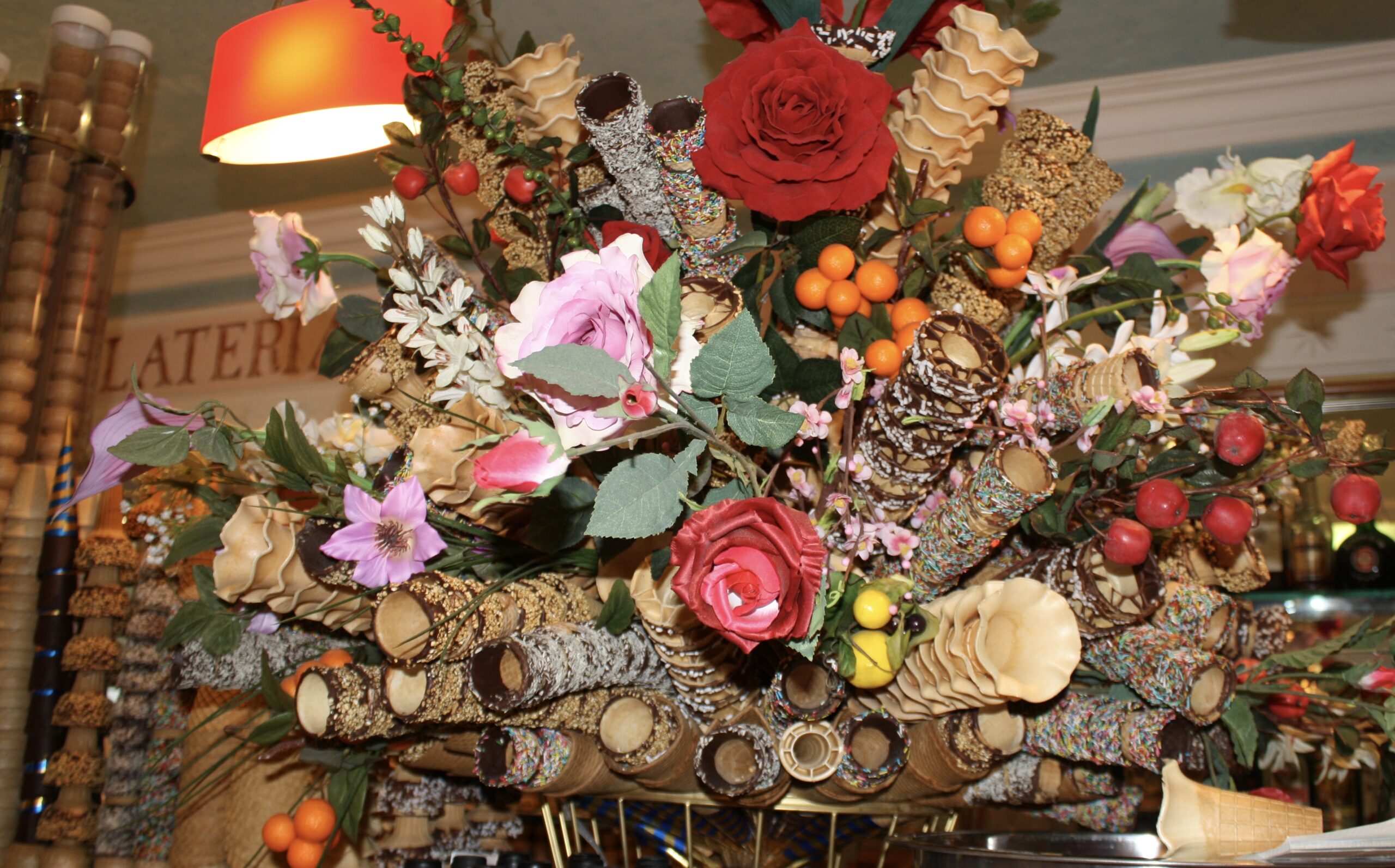
A bouquet of ice cream cones from one of the many gelato shops we frequented–sometimes twice a day.
This Rome travel blog (Part Two) re-post is a result of several friends and travel blog followers asking for Italian travel information, plus my memories and photos of an Italy trip our family took with Monograms Independent Travel (now called Globus Independent).
In Rome: Let’s Visit the Eternal City – Part One, I covered the highlights of Vatican City (St. Peter’s Basilica, the Vatican Museums and the Sistine Chapel); the Roman Colosseum, the Forum, and Palatine Hill.
Click here ⇒ Rome – Let’s Visit the Eternal City – Part One
We pounded the ancient pavement to see as much of Rome as possible in between a day trip to Pompeii and the Amalfi Coast and a “Beyond the Walls of Rome” highlights tour.
The Pantheon
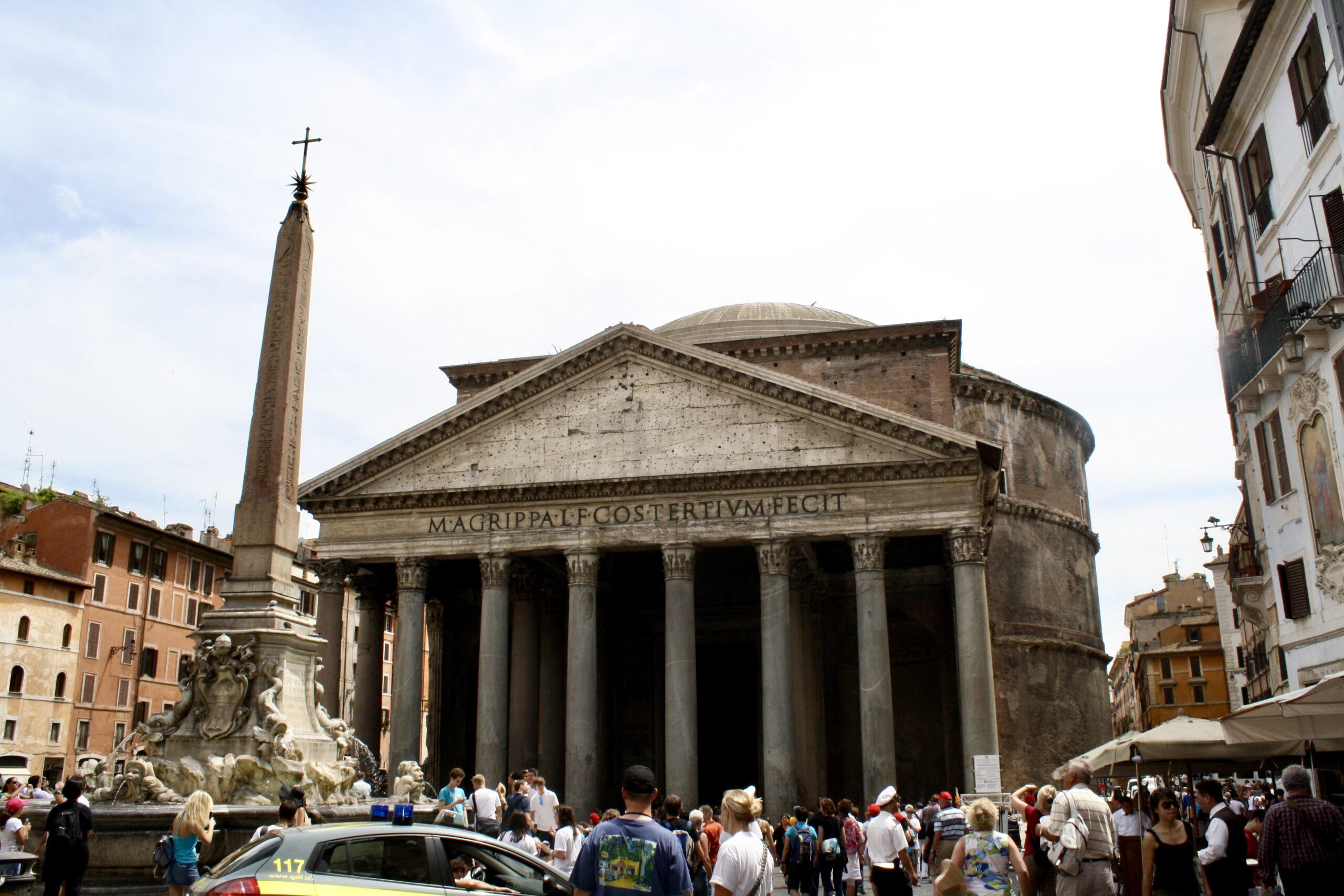
One of the best preserved ancient buildings in Rome is the Pantheon. Its Greek name means temple of all the gods, and the first temple on this site was built by Agrippa in 27 BC.
This Pantheon was rebuilt by Emperor Hadrian in 118 AD. It has the largest unreinforced concrete dome in the world making it a marvel of engineering. A circular opening in the top of the dome (called the oculus) lets in the only light, plus rain! http://www.direzionemuseiroma.culture.gov.it
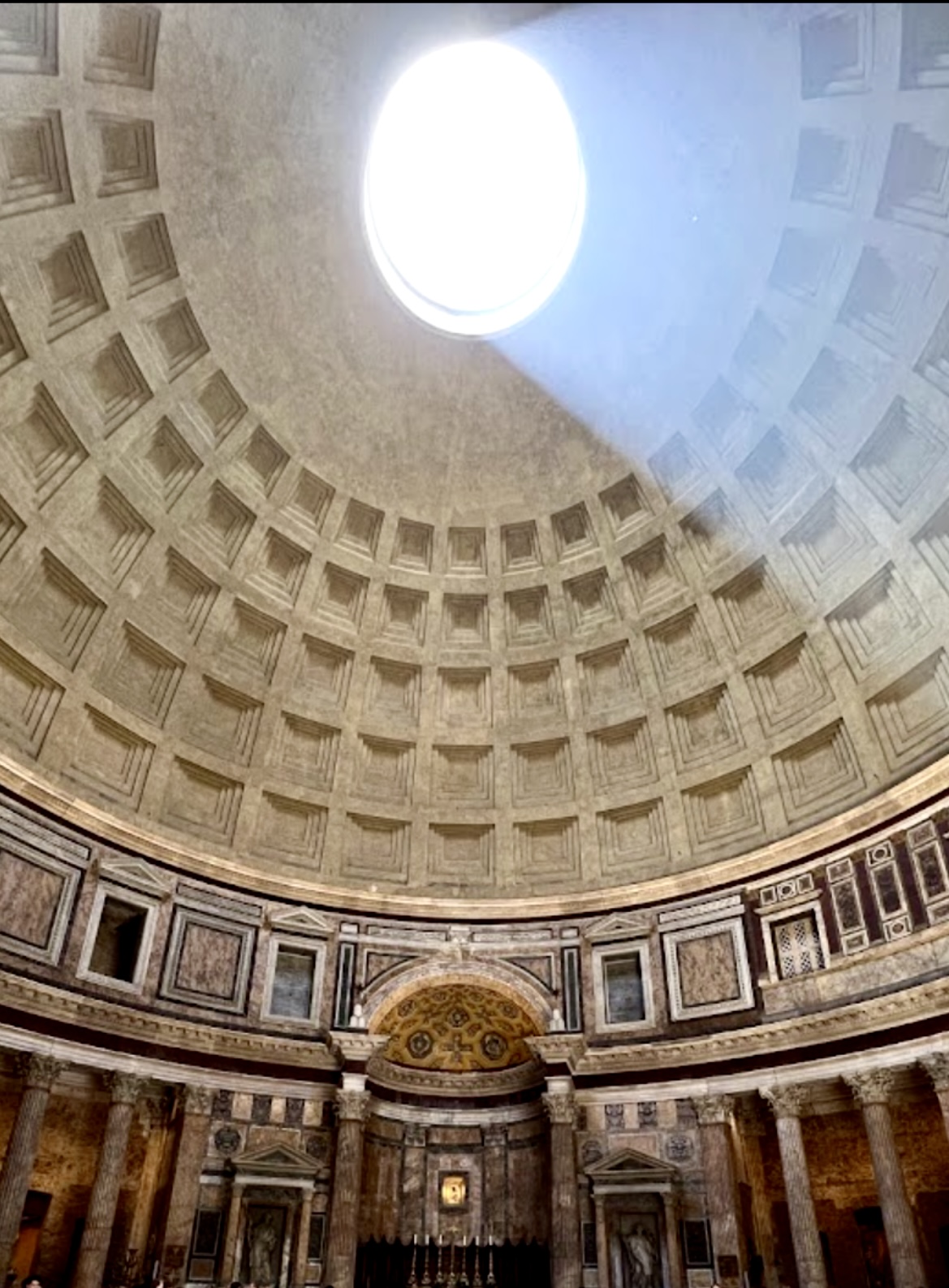
Many notable people are buried inside including the first two kings of unified Italy: Victor Emmanuel II and his son, Umberto I. Most say the most important Pantheon tomb is that of Raphael Sanzio, the Renaissance painter, sculptor, and architect.
In 609 AD, it became a church. The pagan gods were removed and replaced with statues of Christian saints and beautiful art.
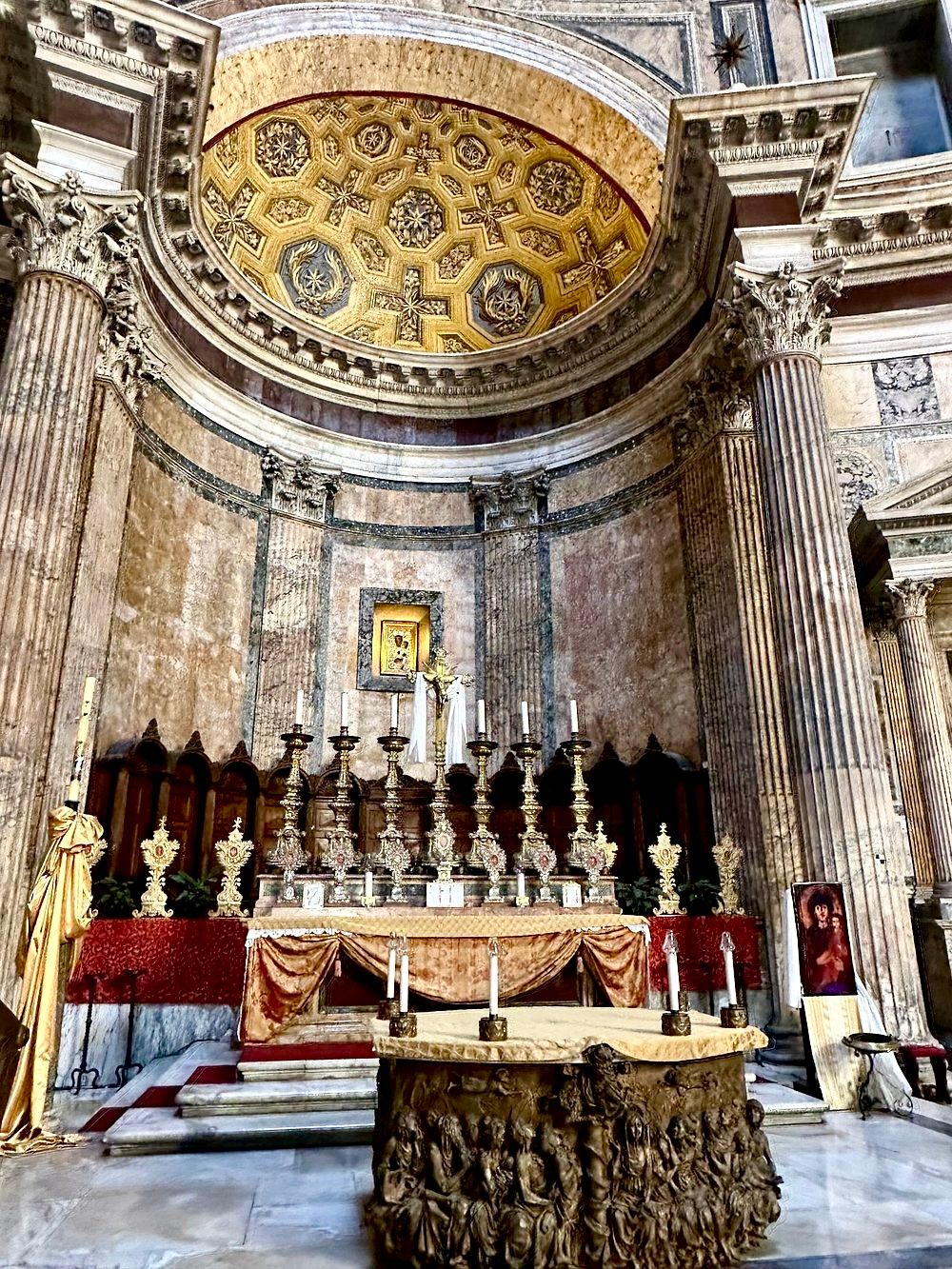
Blooper: We visited the Pantheon our first day in Rome after flying all night. While I was inside exploring, my jet-lagged husband and daughter fell asleep outside leaning against a 2000-year-old column in a very busy and loud plaza. I should have taken a photo!
The Trevi Fountain
No trip to Rome is complete without a visit to the Trevi Fountain. http://www.turismoroma.it Rome’s largest and most famous “Fontana di Trevi” was completed in 1762 and symbolizes “the two moods of the sea” and “taming of the waters.”
This is the end-point of an ancient aqueduct dating back to 19 BC which fed clear water from Aqua Vergine. It got its name from the three streets which intersect at the fountain translating to Trivium or “tré vie.”
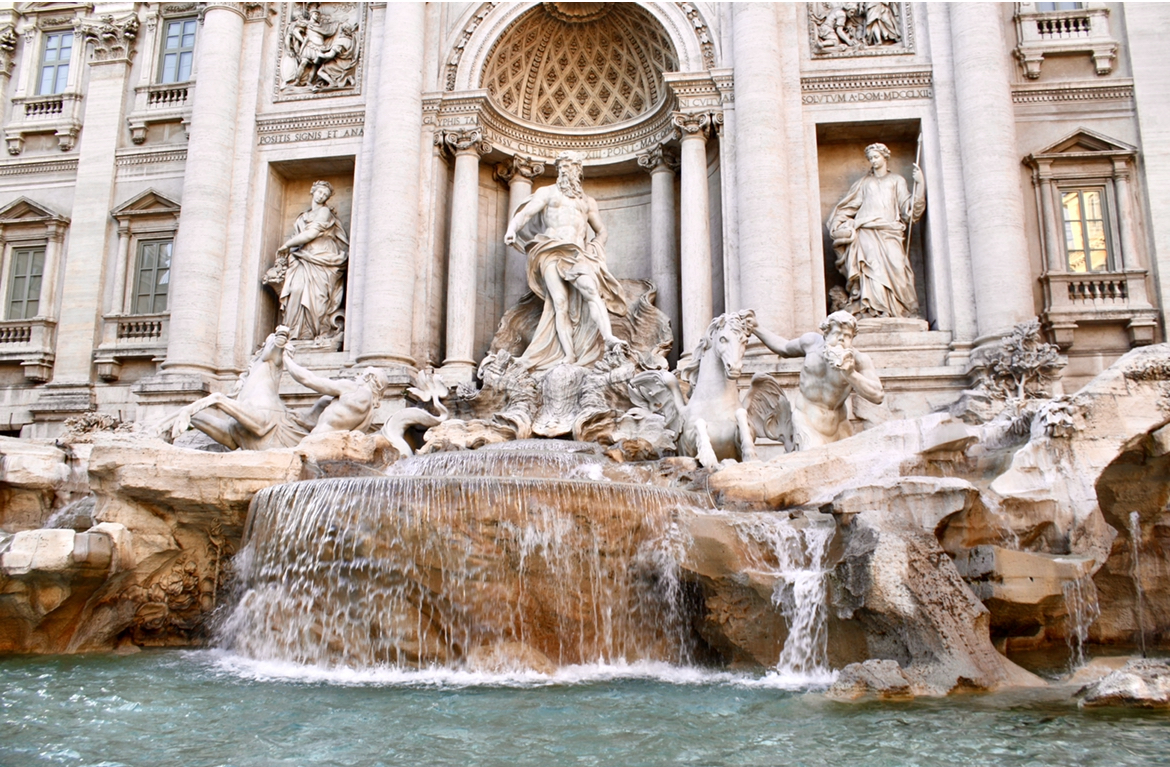
Still fun and famous today is a tradition ancient Romans began and every tourist must do! The ritual is to stand with your back to the fountain and toss a coin from your right hand over your left shoulder to ensure another visit to Rome. Get your coins ready!
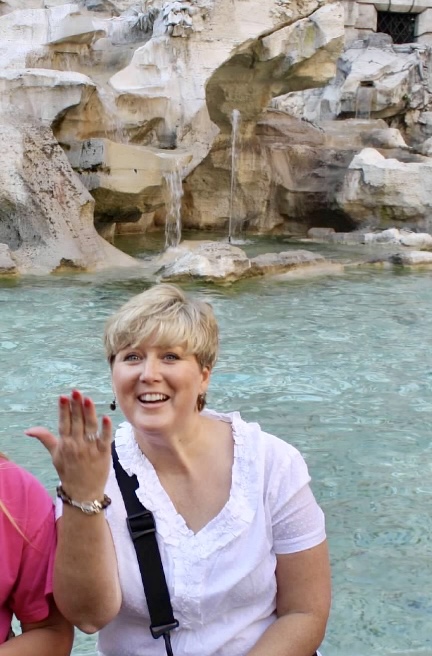
Hundreds of movies have been made in Rome, but a few featuring the Trevi Fountain include:
- The 1960 film La Dolce Vita, where Anita Ekberg wades into the fountain with Marcello Mastroianni.
- The 1954 film Three Coins in the Fountain, where three hopeful Americans visiting Italy fling their coins into the fountain.
Piazza Navona
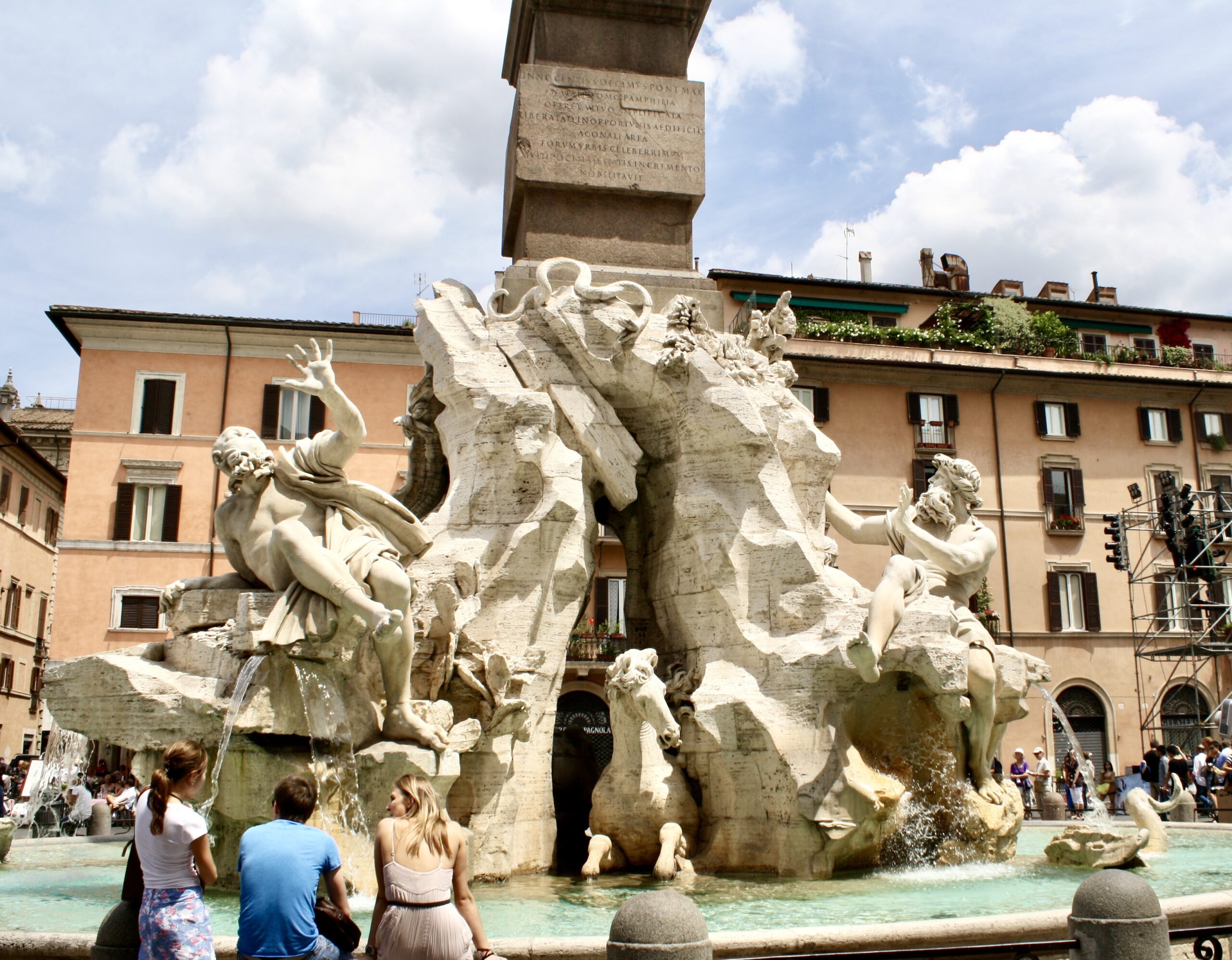
One of Rome’s most popular plazas is a site once used for chariot races in the first century. Its layout is still in the shape of an oblong field and stadium. Piazza Navona was built by Emperor Domitian in 86 AD for athletic contests (called agones), and it seated 30,000 Romans. In the 1600s, Piazza Navona took on its current look when Pope Innocent X commissioned a new church and palace around the plaza.
Bernini was commissioned to create the magnificent Fountain of the Four Rivers: the Nile, the Danube, the Río de la Plata, and the Ganges (the four great rivers of the world at that time). An Egyptian obelisk, moved from the Appian Way, sits above the fountain.
Two other fountains complete the huge plaza: the Moor Fountain and Fountain of Neptune. Are you beginning to see a “water theme?” Rome has more functional fountains (over 2000) than any other city in the world.
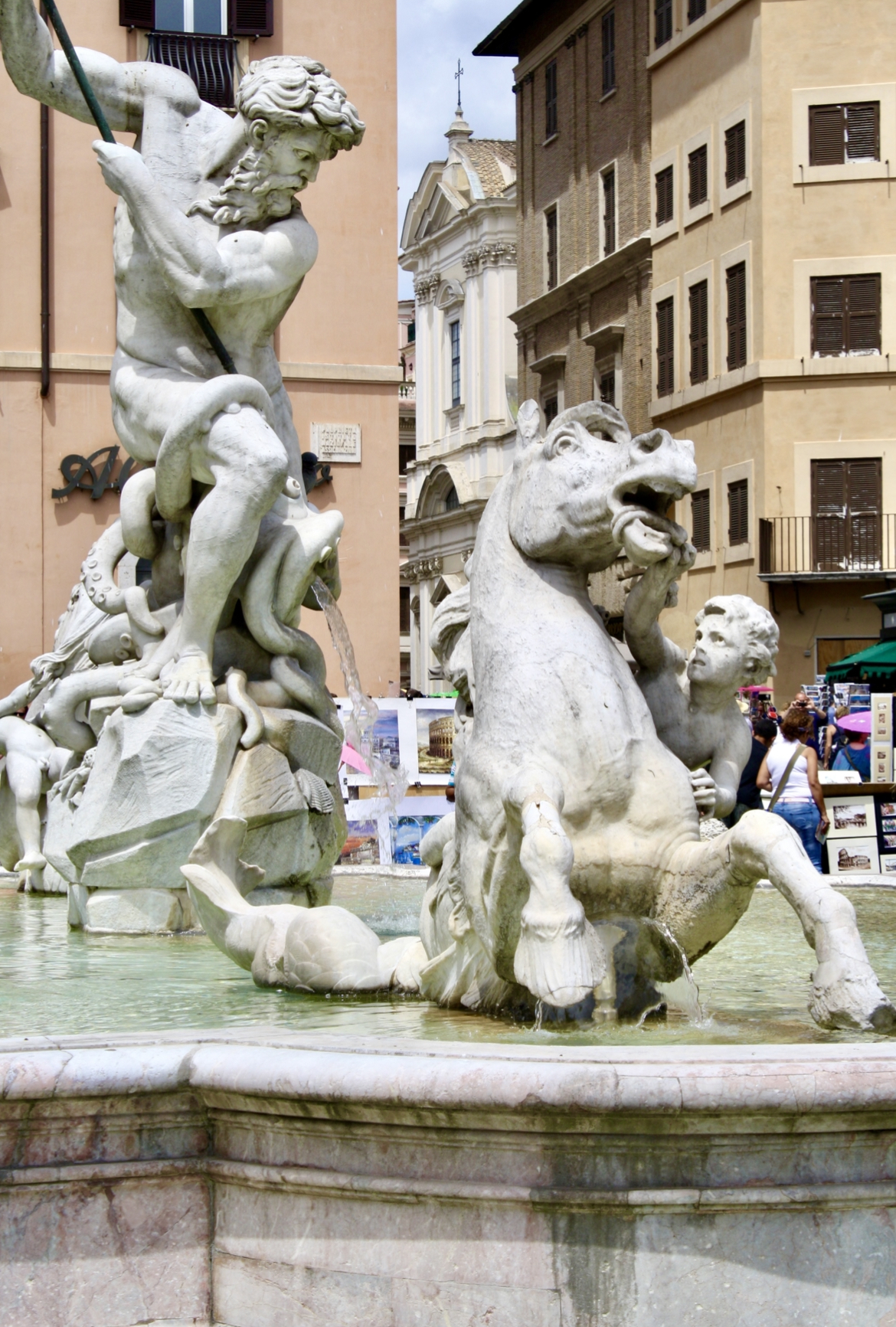
Piazza Navona’s art market is a great place to buy keepsakes for your trip. This plaza had the best offering of watercolors and oil paintings we saw in Rome. Cafes and restaurants line the plaza, and it’s a wonderful spot to eat and people watch.
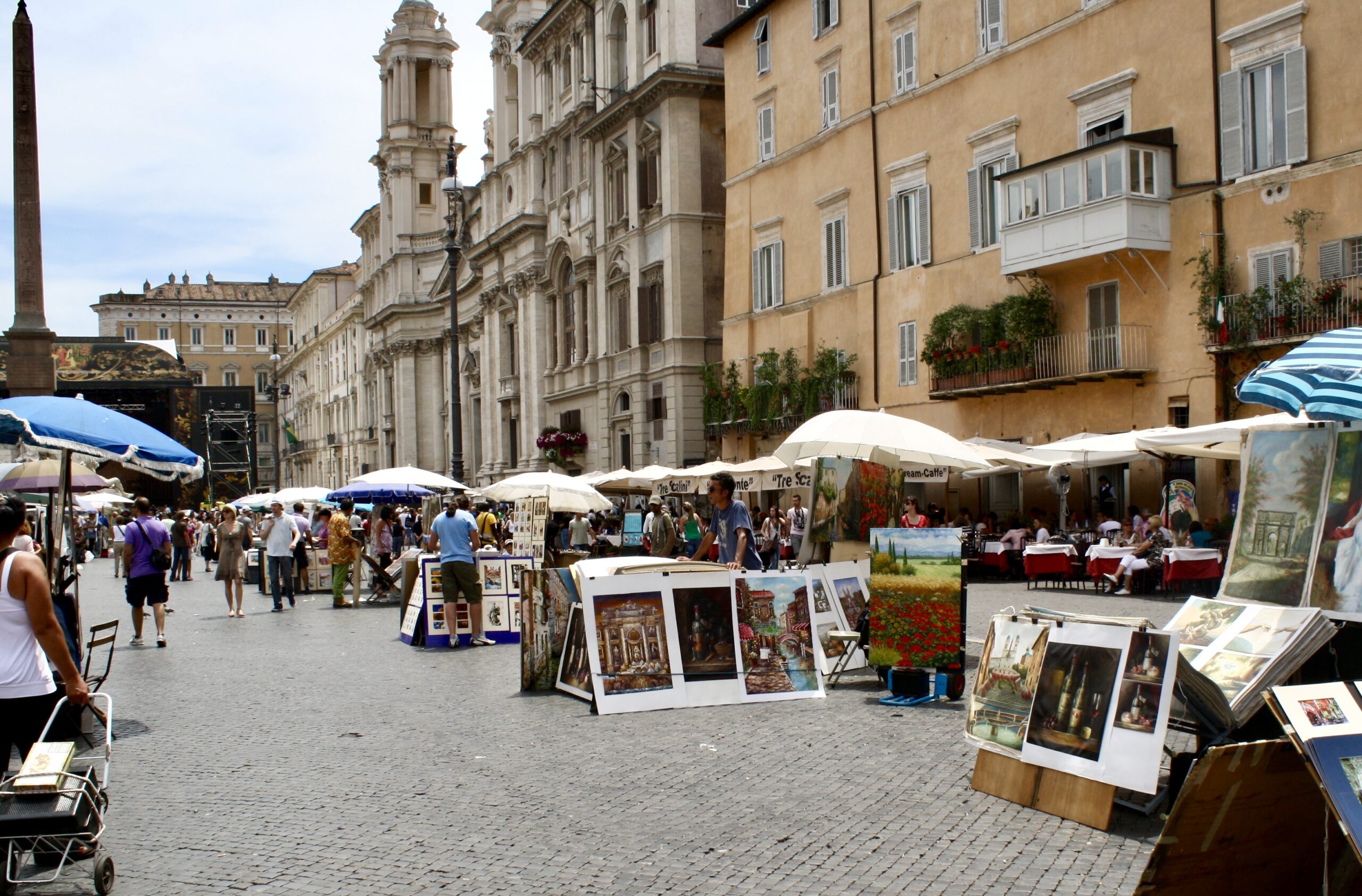
Tip: If you know you plan to purchase pottery, wine, art, or other special items from a city you’re visiting, get it when you see it! Ship it home too. More than once, I’ve regretted passing up a treasure I thought I would find at another location.
A favorite memory I have from Rome!
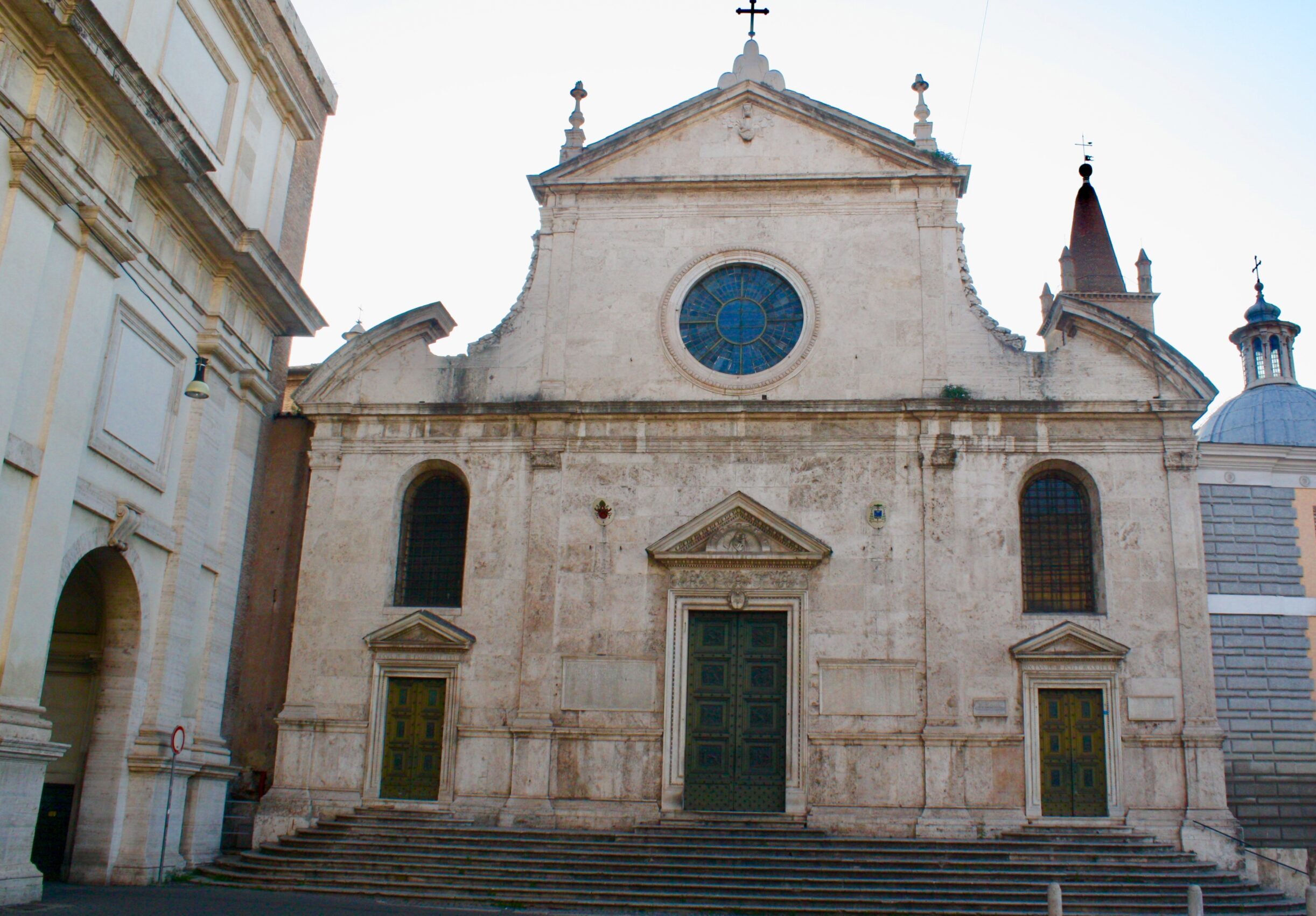
The Santa Maria del Popolo Basilica
Our last morning before taking the train to Florence, I personally wanted to visit the Santa Maria del Popolo Basilica. http://www.santamariadelpopoloroma.it.
My goal was to see two Caravaggio paintings I had studied in college, and to investigate the popular Chigi Chapel housing Bernini’s sculptures of Daniel and the Lion and Habakkuk and the Angel. (Note: My husband and daughter did not come along; they were pacing themselves regarding my art-overload).
My sister-in-law and I walked over to the massive Piazza del Popolo very early that morning only to find the door locked and the church closed. Hmmm….. Churches in Rome open early for locals to stop in and pray before starting the day. We were disappointed and asked a policeman in the plaza when the church might open. He suggested we go to the basilica side door and knock. So, we did!
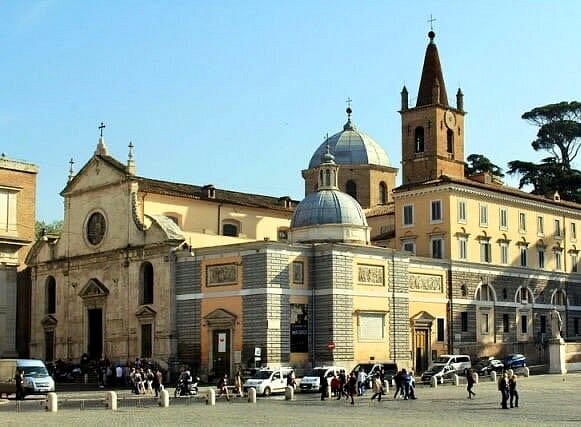
Out of curiosity, we found the side door and did knock, and a little man came to the door, keys jingling. Using my very-broken-Italian, I tried to ask when the church would open, explaining we were leaving Rome that morning. He smiled and said in his much-better-English, “Ahh… you must be here to see its beauty. Come in!”
Treasures in the Santa Maria del Popolo
When we entered the church, it was still in total darkness. He began turning on lights and pointed us in the direction of one of the richest art collections in Rome. A jewel is hidden just beyond that big door and simple facade!
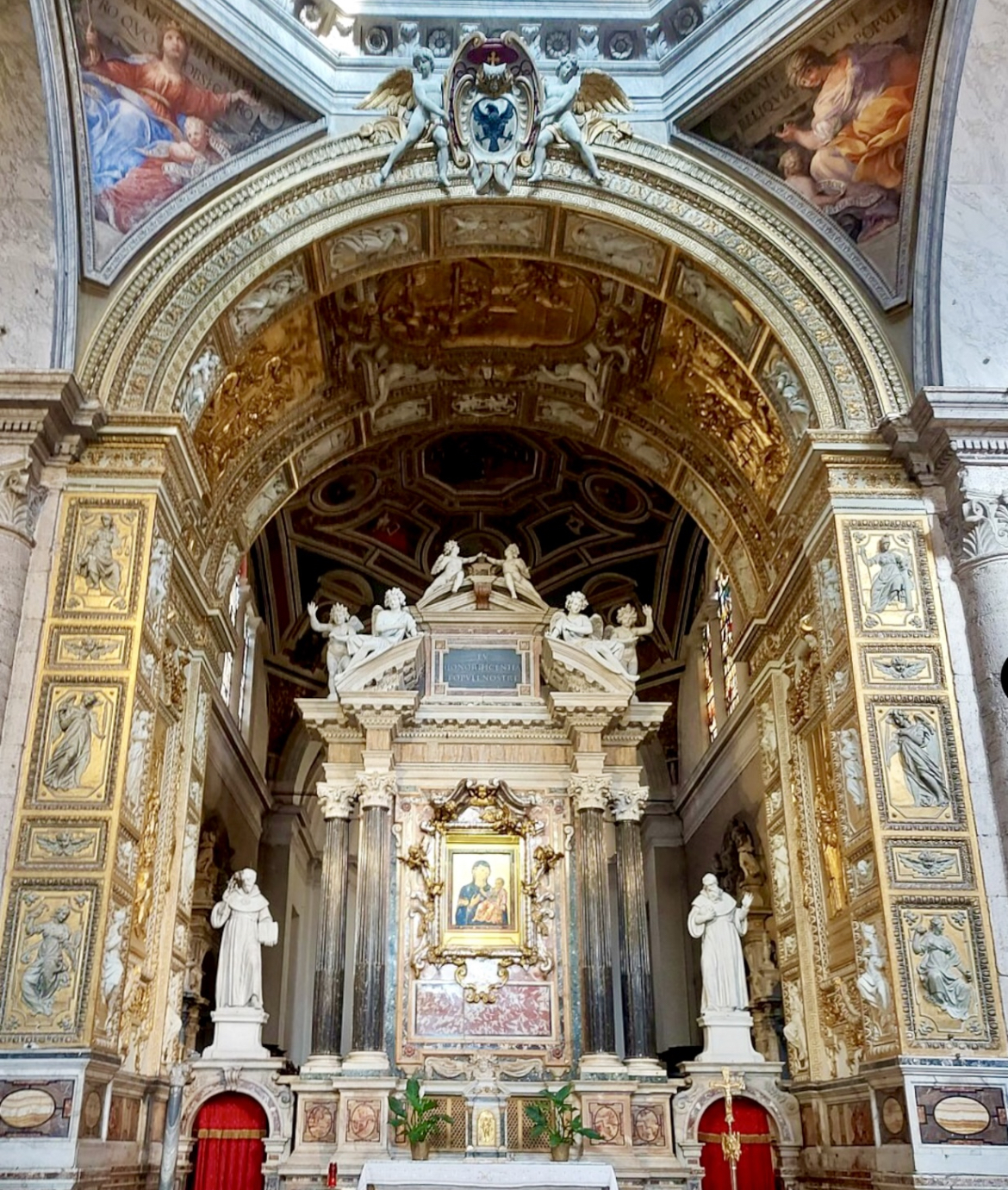
Treasures appeared as the church was filled with light. Bernini had his hand in sculpting saints and angels all around the altar and cornices, and he also designed the ornate organ loft case. The apse (or altar area) was designed by Bramante, and the basilica can boast it has the oldest stained-glass window in Rome.
TIP: Access to the choir designed by Bramante is denied to the public, but you can catch a glimpse of the stained glass from the nave.
The twelve uniquely decorated side chapels were commissioned by rich families, Cardinals, and Bishops. Sadly, the Chigi Chapel was being renovated, and the Bernini sculptures were covered in plastic for protection. Bummer! The Chigi Chapel, redesigned by Bernini, is also featured in Dan Brown’s book and film Angels and Demons.
We did, however, see the two Caravaggio paintings in the beautiful Cerasi Chapel: The Conversion of Saint Paul and The Crucifixion of Saint Peter.
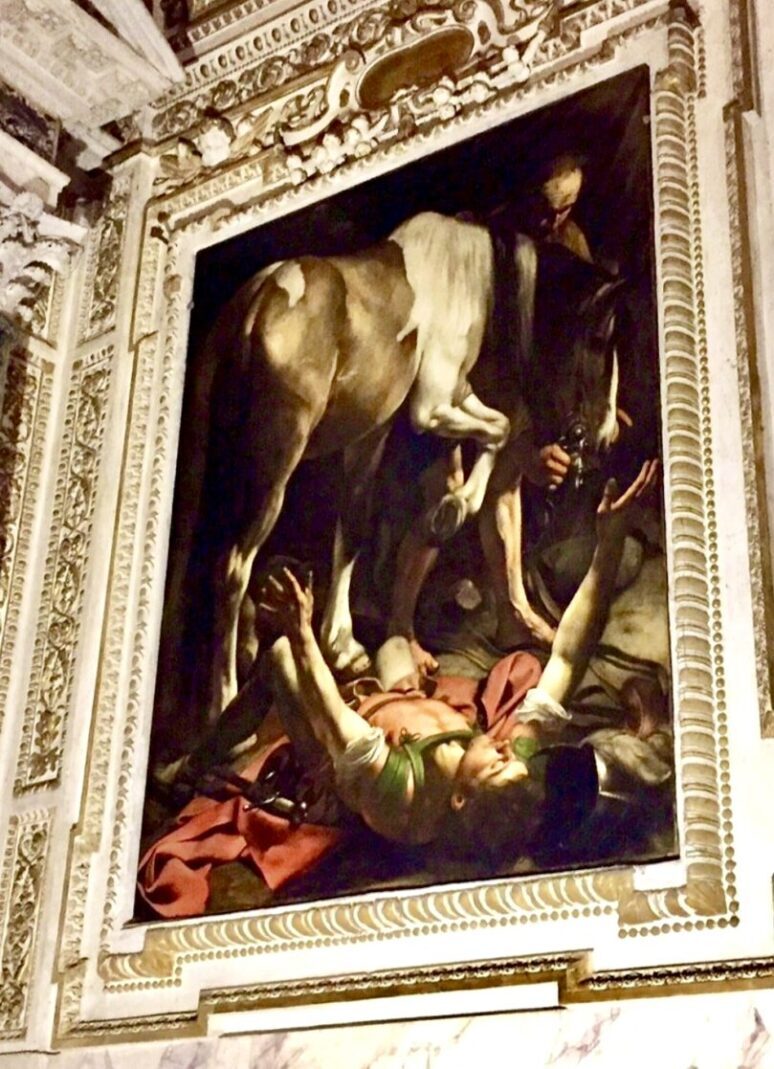
The Conversion of Saint Paul
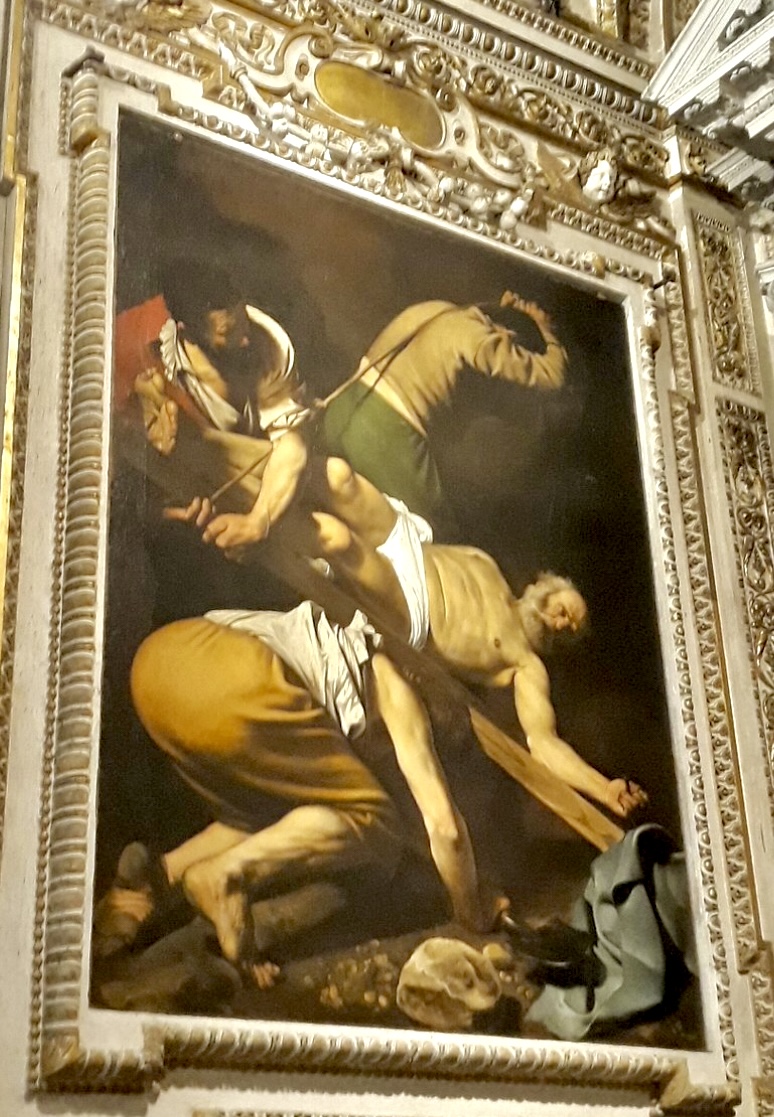
The Crucifixion of Saint Peter
A very kind “keeper of the keys” allowed us a special private tour before he opened the doors to the public. I’m glad we asked, and I’ll never forget it!
Not mentioned in detail but definitely worth seeing in Rome!
Carve out some time for these places if you can!
- Via Condotti – one of the most famous shopping streets in Rome near the Spanish Steps.
- The Circus Maximus – ruins of an ancient Roman chariot racing stadium/entertainment venue which could hold up to 150,000 spectators.
- The famous Spanish Steps – joining two popular plazas: Piazza di Spagna and Piazza Trinitá dei Monti. Photo Opp!
- Piazza del Popolo – one of Rome’s largest plazas with multiple churches, the Porta del Popolo gate, and a 3000-year-old obelisk at its center.
- The Victor Emmanuel II Monument, a symbol of Italian unification and nationalism.
- Villa Borghese gardens – the most popular park in Rome and the Borghese Gallery and Museum.
- The bridges along the Tiber River and the ancient cobblestone streets.
- Castel Sant’Angelo – a circular fort and castle complex (129 AD), now a part of Vatican City.
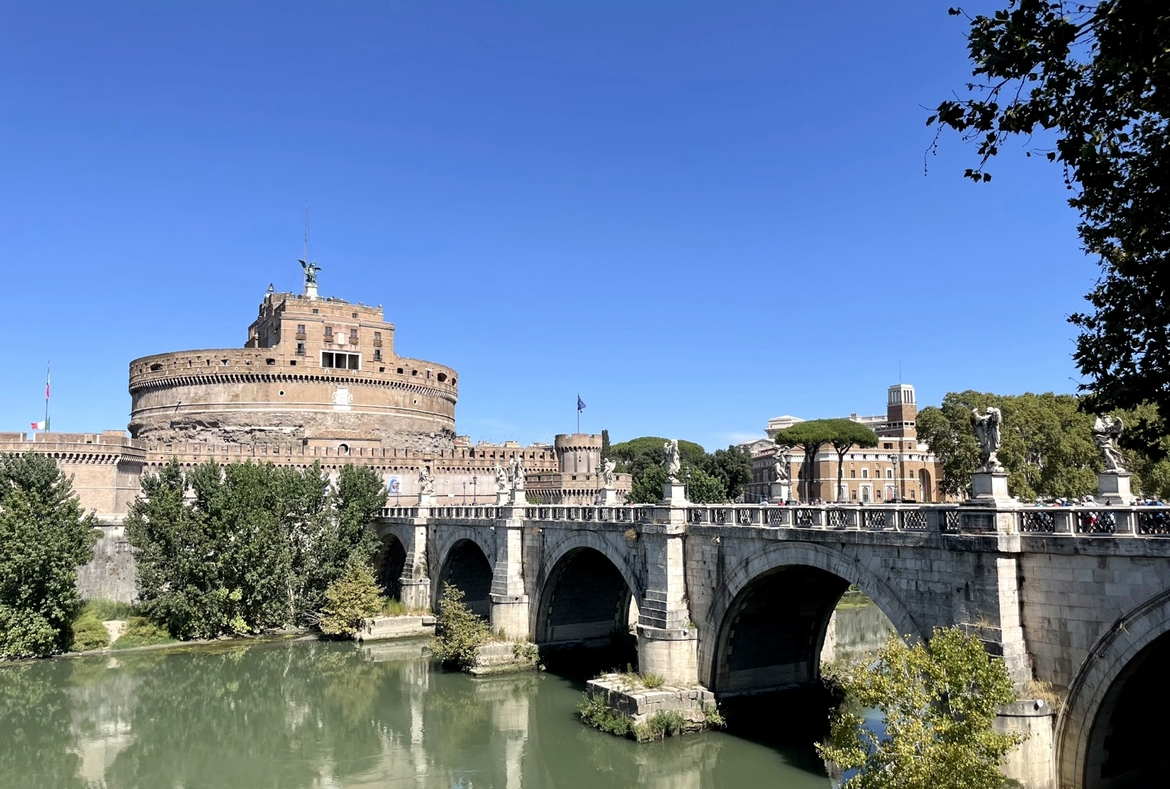
The Castel Sant’Angelo and the pedestrian Ponte Sant’Angelo over the Tiber River
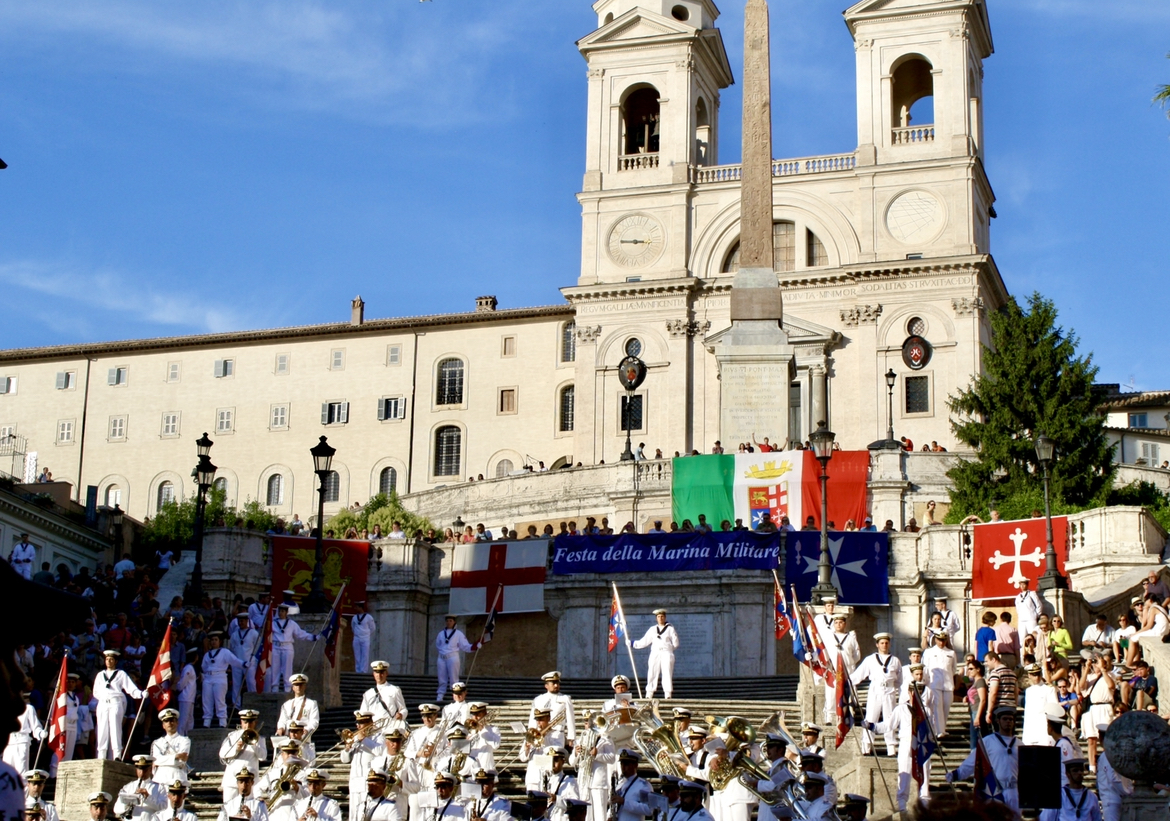
The Spanish Steps – A military band was performing, so we didn’t climb the famous steps!
Beyond the City Walls of Rome
To better understand Rome’s big picture, we added a Monograms tour to explore beyond its city walls. The ancient city was built on and between the famous “Seven Hills of Rome.” We were able to walk a bit of the ancient Appian Way (called the Via Appia Antica in Rome).
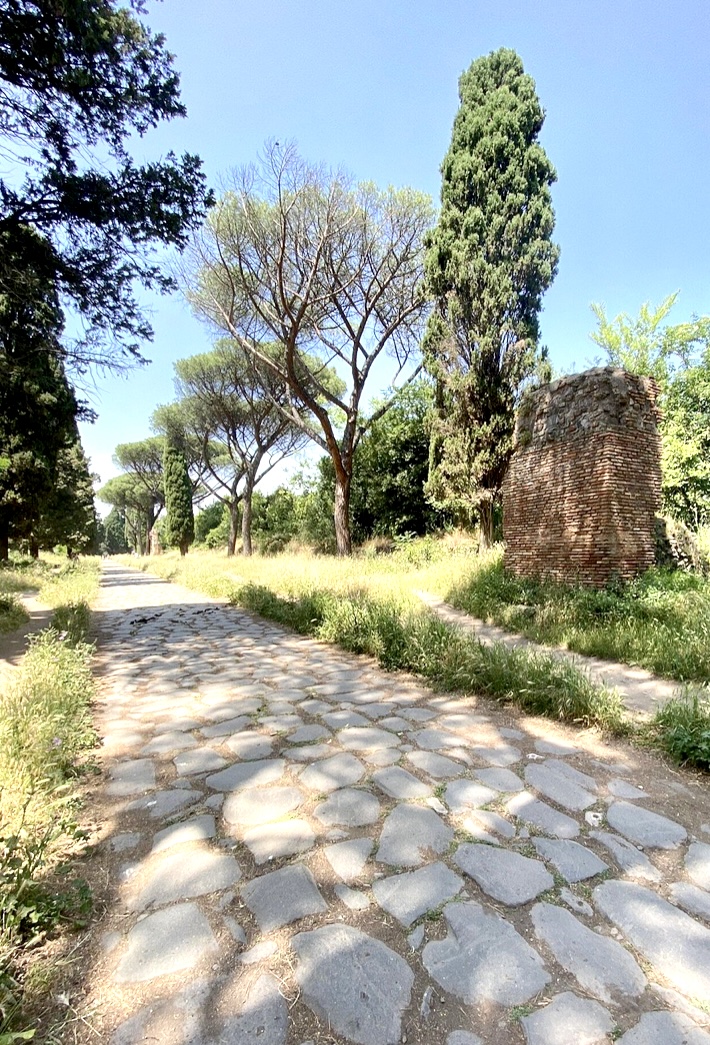
The Appian Way
For both military and trade purposes, one of the most important roadways built by the Romans was the Appian Way. Designed and constructed in 312 BC by Appius Claudius Caecus, this straight as an arrow Roman road connected to Capua (near Naples) and eventually extended almost 400 miles south to the seaport of Brindisi.
Today, portions of the Appian Way are a preserved nature park for pedestrians. You can now walk the same footpath as emperors (like Julius Caesar), the Apostle Peter (fleeing persecution in Rome when he encountered the risen Jesus), the Apostle Paul (as he exited a ship and walked toward Rome as a prisoner), and the ex-gladiator, Spartacus.
In 73 BC, Spartacus led a two-year slave revolt against the Romans with an army of 60,000+, and he died in one of those battles. In 71 BC, over 6,000 captured slaves were crucified on crosses, roughly every 50 feet, from Rome to Capua on the Appian Way. The Romans left them hanging there for months to remind everyone passing by of what “not to do!”
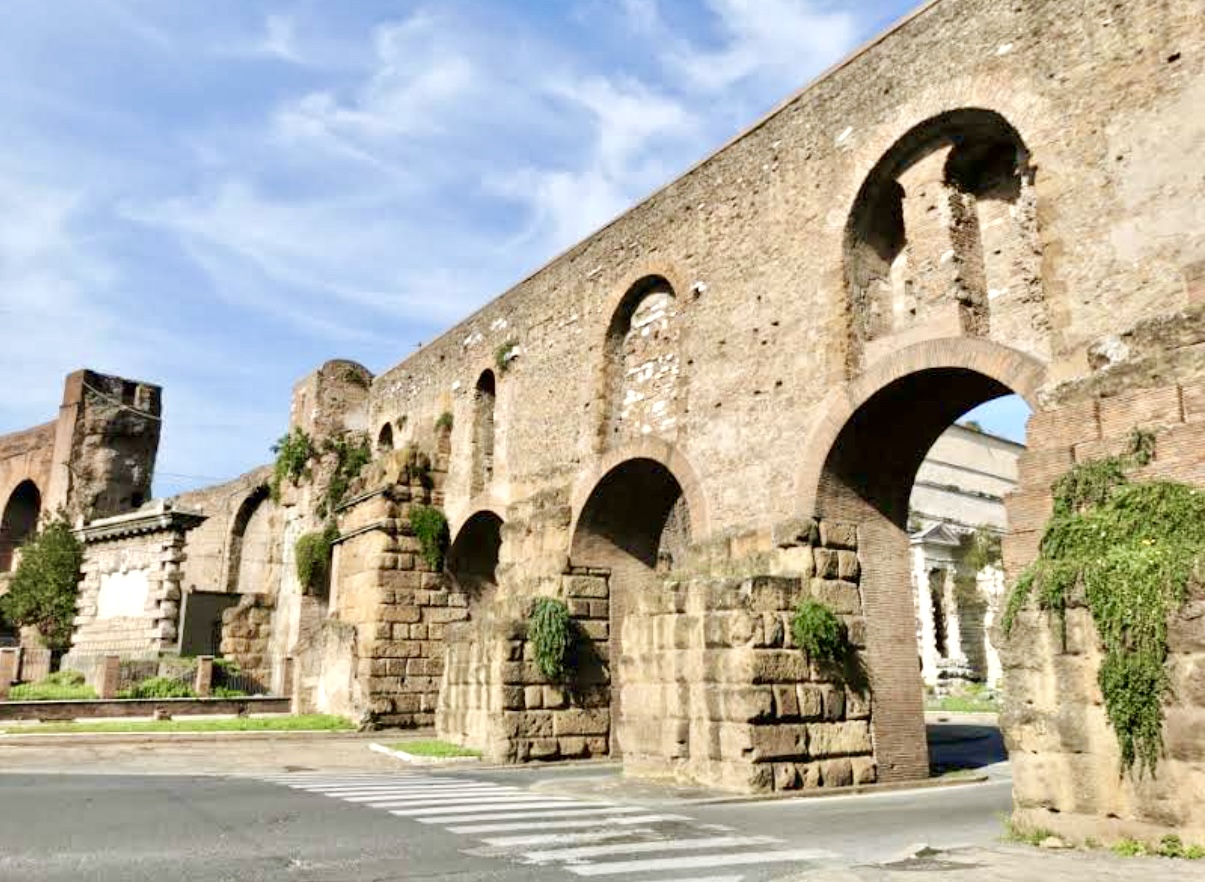
Ancient Aurelian Walls
Back on the bus, we saw the Aurelian walls (built around Rome for protection), the Baths of Caracalla, and the Circus Maximus.
We also learned about the Palazzo Margherita, where the Italian Queen Margherita once lived. Today, it is the American Embassy.
Domitilla Catacombs
The Catacombs of Domitilla are located near the Appian Way. Catacomb cemeteries are underground burial sites located outside the city limits.
Early-Christians, Jews and pagans were buried in more than 40 cemeteries from the 1st to the 5th centuries. Catacomb burials continued until the persecution of Christians ceased with the Edict of Milan in 313 AD. These particular catacombs were named after the Domitilla family who allowed them to be dug on their family land.
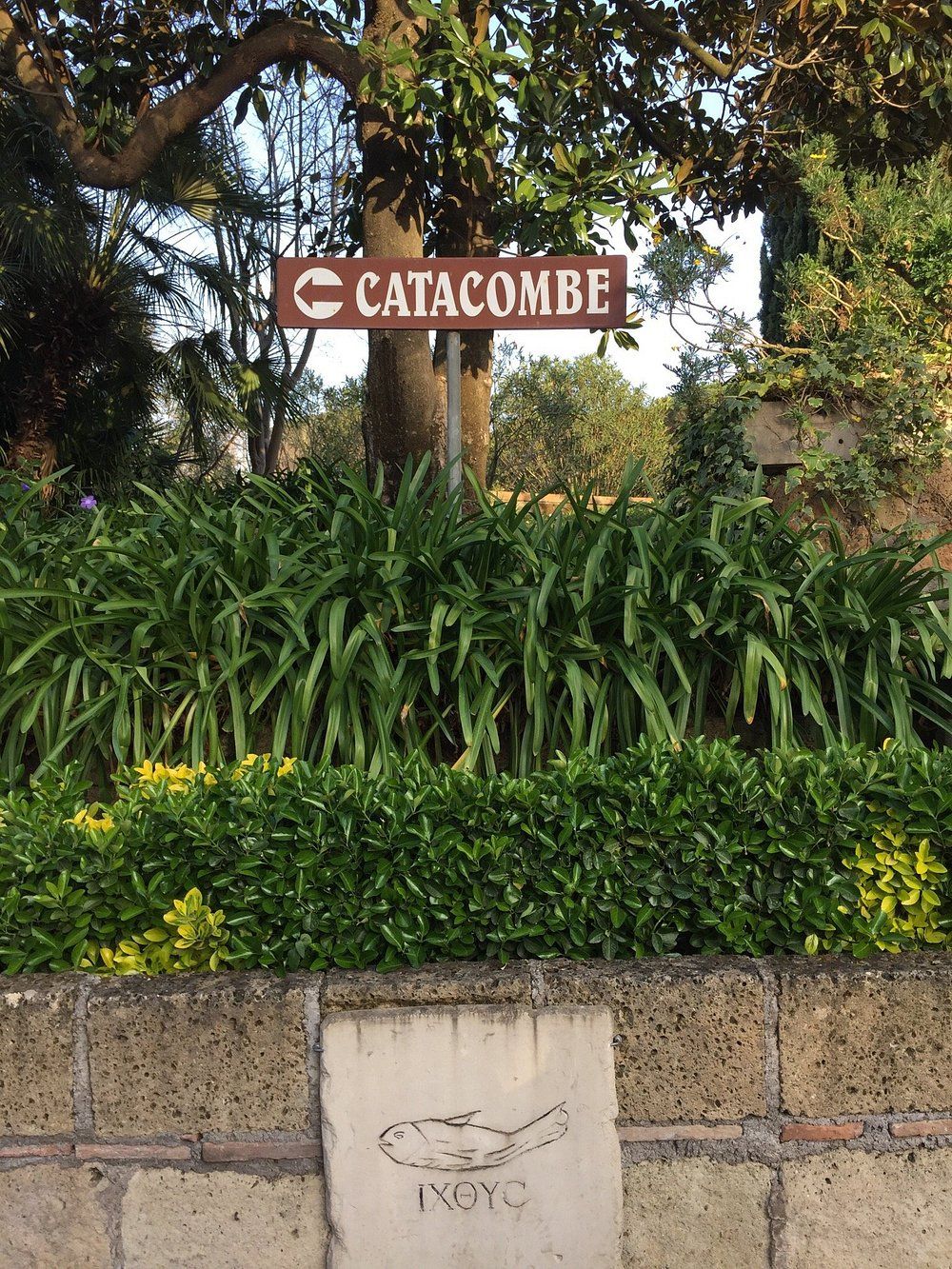
In a below-ground labyrinth spanning some 11 miles and four levels, the Domitilla catacomb passageways contain over 26,000 tombs. (Photos were not allowed, and our guided tour covered a mere 5% of the enormous catacomb network). Through narrow and dark tunnels, multiple layers of niches carved into the cave walls can be seen where human remains were, and still are, buried.
At the time, a majority of people could not read, so instead of names or dates being engraved, mementos or Christian symbols were left or carved into the limestone (not only to remember them, but to mark where they were buried). Since 2017, restorations have uncovered colorful frescoes.
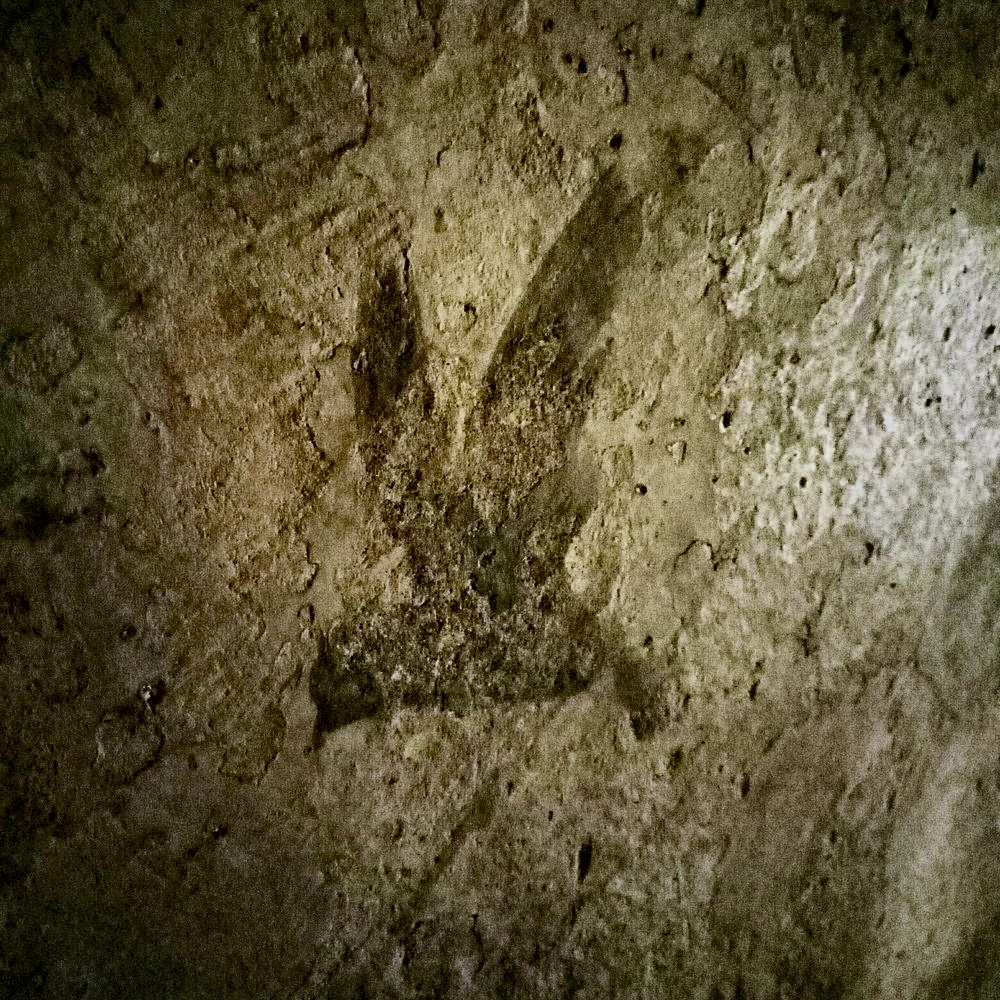
TIP: If you’re claustrophobic or you get spooked by cemeteries, visiting the catacombs may not be your cup of tea. I thought it was incredibly interesting, and our teenager thought it was pretty cool!
Papal Basilica of Saint Paul Outside the Walls
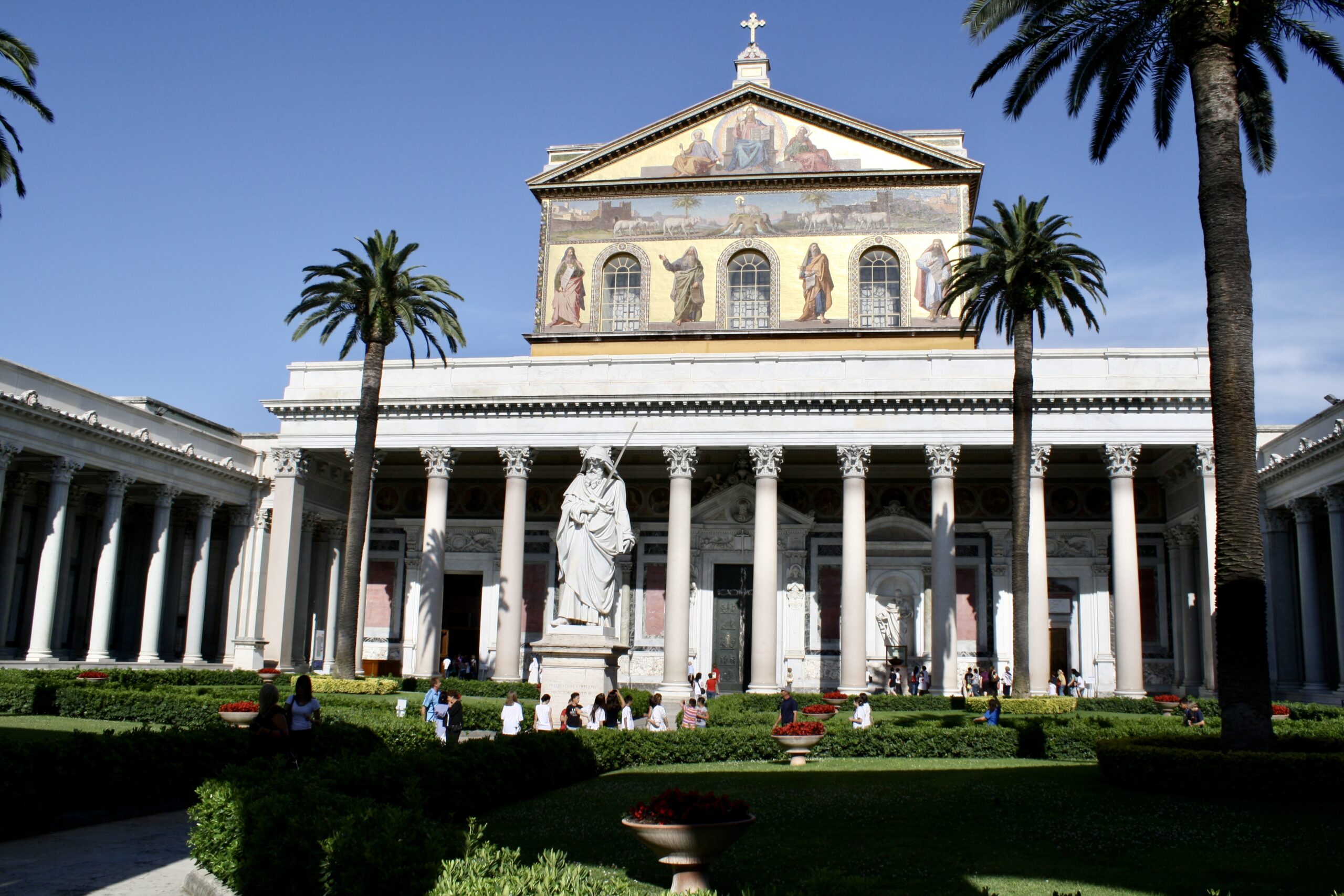
Last, we visited the Basilica of St. Paul Outside the Walls. The Apostle Paul was martyred (beheaded) in Rome. According to tradition, Paul’s body was buried along the Ostiense Way, two miles away from the location of his martyrdom in a tomb owned by a Christian woman.
Although Paul was a Roman citizen (unlike the Apostle Peter), he was not allowed to be buried inside the city walls because he was a Christian. This explains why the basilica name includes “Outside the Walls” of Rome.
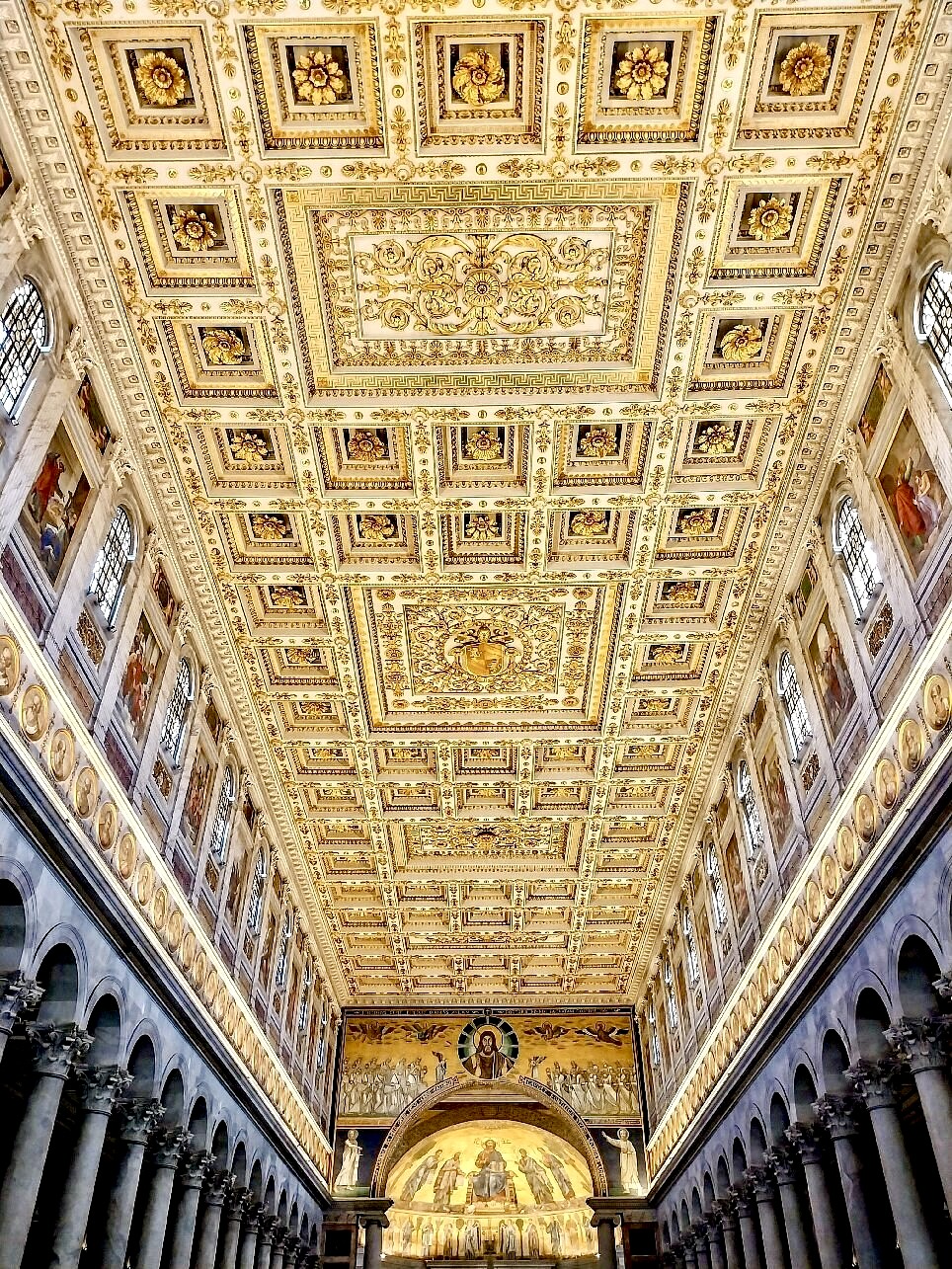
Stunning interior!
Thankfully, Paul’s companions built a shrine over his grave to mark it. In the 2nd century, Emperor Constantine built the first church over Paul’s grave. Wars, earthquakes and fires caused many re-builds, and this church reopened in 1840.
It’s a National Monument and one of the four Major Basilicas designated by the Pope. This basilica also has a Holy Door or Jubilee Door which is traditionally sealed shut and opened only for the Jubilee, every 25 years.
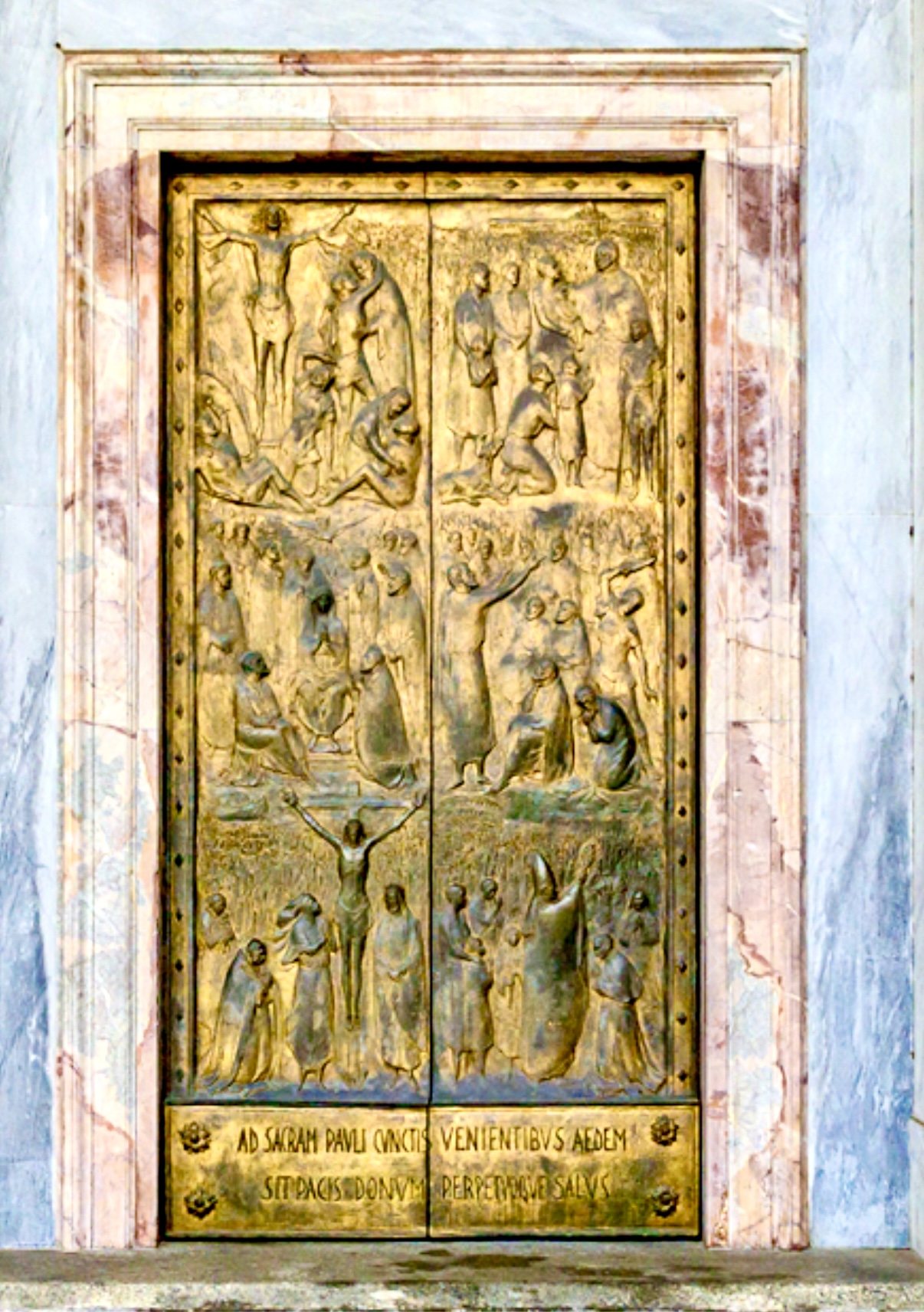
During the 2025 Jubilee, this door will be open.
Inside the basilica is the sacred tomb of St. Paul. Encased above his tomb are the chains once used to secure Paul to each Roman soldier who guarded him. (See below).
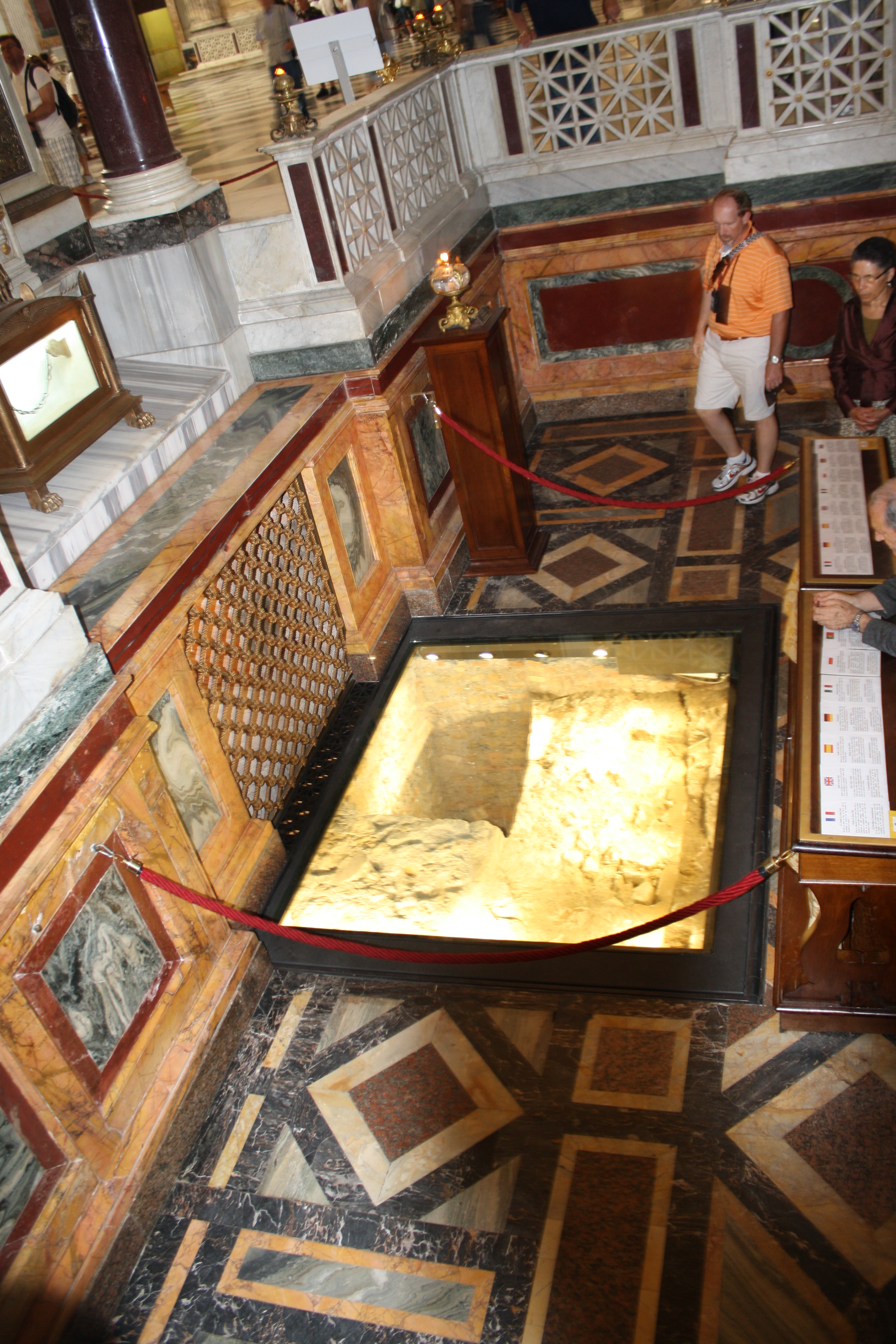
Talk the talk: A little Italian to pack in your carry-on
When traveling, learning a little bit of the country’s language always comes in handy. Plug these words or phrases into a Translation App, and you can hear a true Italian annunciate them romantically and molto rapido!
- Hi and Bye (casual) – Ciao! – (chow)
- Goodbye – Arrivederci – (Ahr-ree-veh-dehr-chee)
- Good morning and hello – Buongiorno – (Bwohn-johr-noh)
- Good evening – Buonasera – (Bwoh-nah-seh-rah)
- Yes – Si – (see)
- No – No- (noh)
- Please– Per favore –(Pehr-fah-voh-reh)
- Thank you – Grazie – (Grah-tsee-eh)
- Excuse me – [for a question] – Scusi – (Skooh-zee)
- Do you speak English? – Parla Inglese? – (Parh-la een-glay-zeh)
- I’m sorry –Mi dispiace – (Mee-dees-pyah-cheh)
- Where is the bathroom? – Dov’è il bagno?- (Dov-veh-eel-bahn-yoh?)
- The check (bill) please – Il conto, per favore – (Eel kon-toh, peehr fah-voh-reh)
Now for the Reality!
Was visiting Rome worth it? Absolutely! It was a fascinating culture experience as I am a lover of history, art, architecture and food. Traveling to an ancient city inhabited thousands of years ago was inspiring! Italy is a perfect country to visit–especially if it’s your first time in Europe.
Was June 2011, the HOTTEST summer ever recorded in Rome history (or was I just menopausal)? It sure felt like it! Travel dates are often dictated by work and school schedules but keep traveling…and stay hydrated!
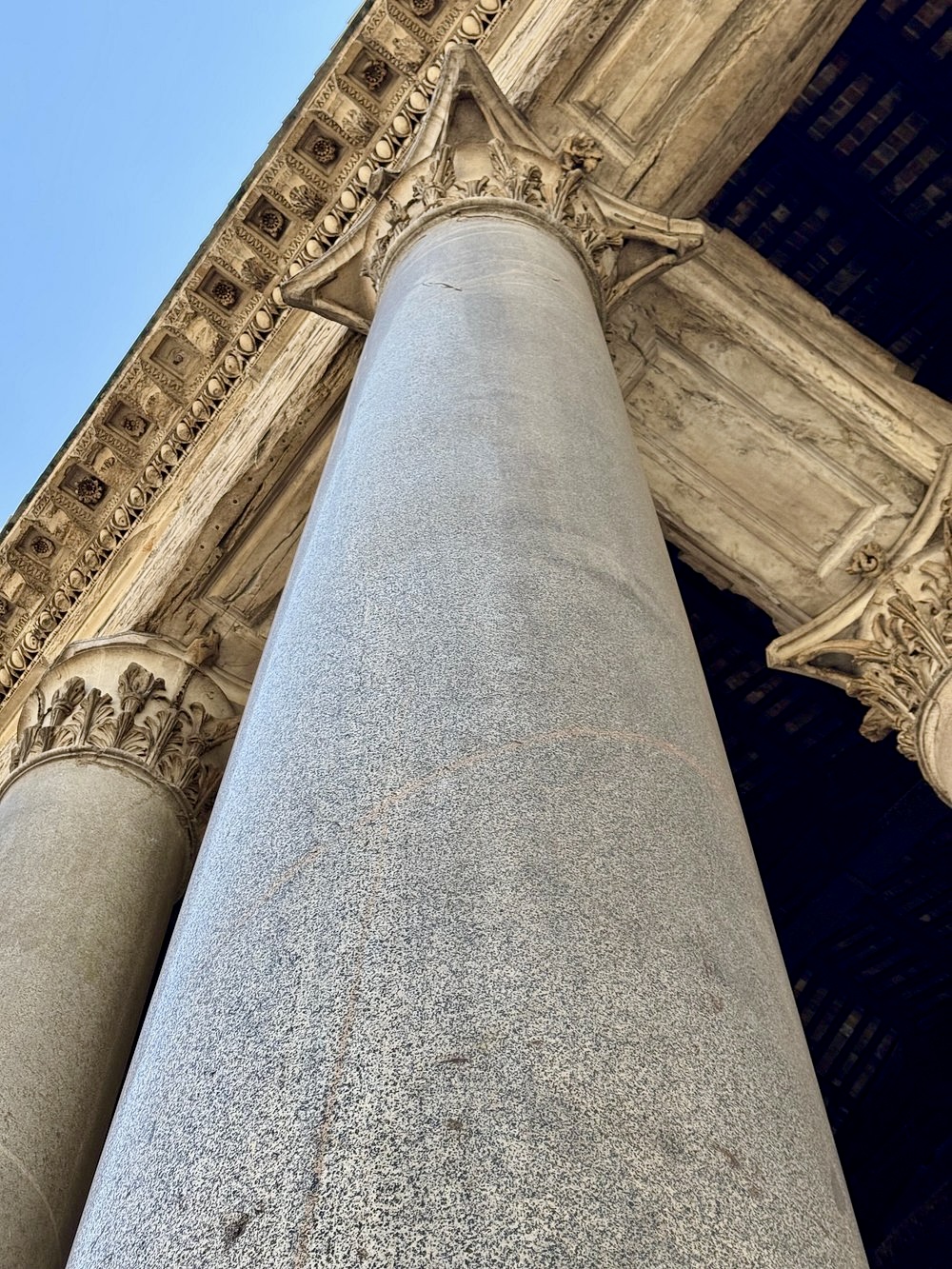
Massive Pantheon columns
Finally, did I get to see the Pope? Regrettably, no! And I’m not even a Catholic. I simply wanted to experience the unique Sunday custom of being in St. Peter’s Square with crowds, bells ringing, and seeing the pope (Pope Benedict, in 2011) appear from the window of his private study at midday to lead those gathered.
We missed the pope because we were waiting on airport travelers to join our tour the morning we arrived in Rome. HOWEVER: I tossed my coins into the Trevi Fountain, so I expect to revisit Rome!
And last, when in Rome, be prepared to EAT! Food in Italy is about culture and family. It’s simple; it’s not showy. It’s authentically fresh, and it’s delicious! Italians bless you with their food!
Devour the pizza, try all the pastas, and drink Italian wine! The four great Roman pasta dishes are Gricia, Caio e Pepe, Carbonara, and Amatriciana.
Pizza Margherita was invented by a Naples chef in honor of Queen Margherita and Italy’s unification. The toppings are inspired by the national flag: red (tomato), white (mozzarella cheese), and green (basil).
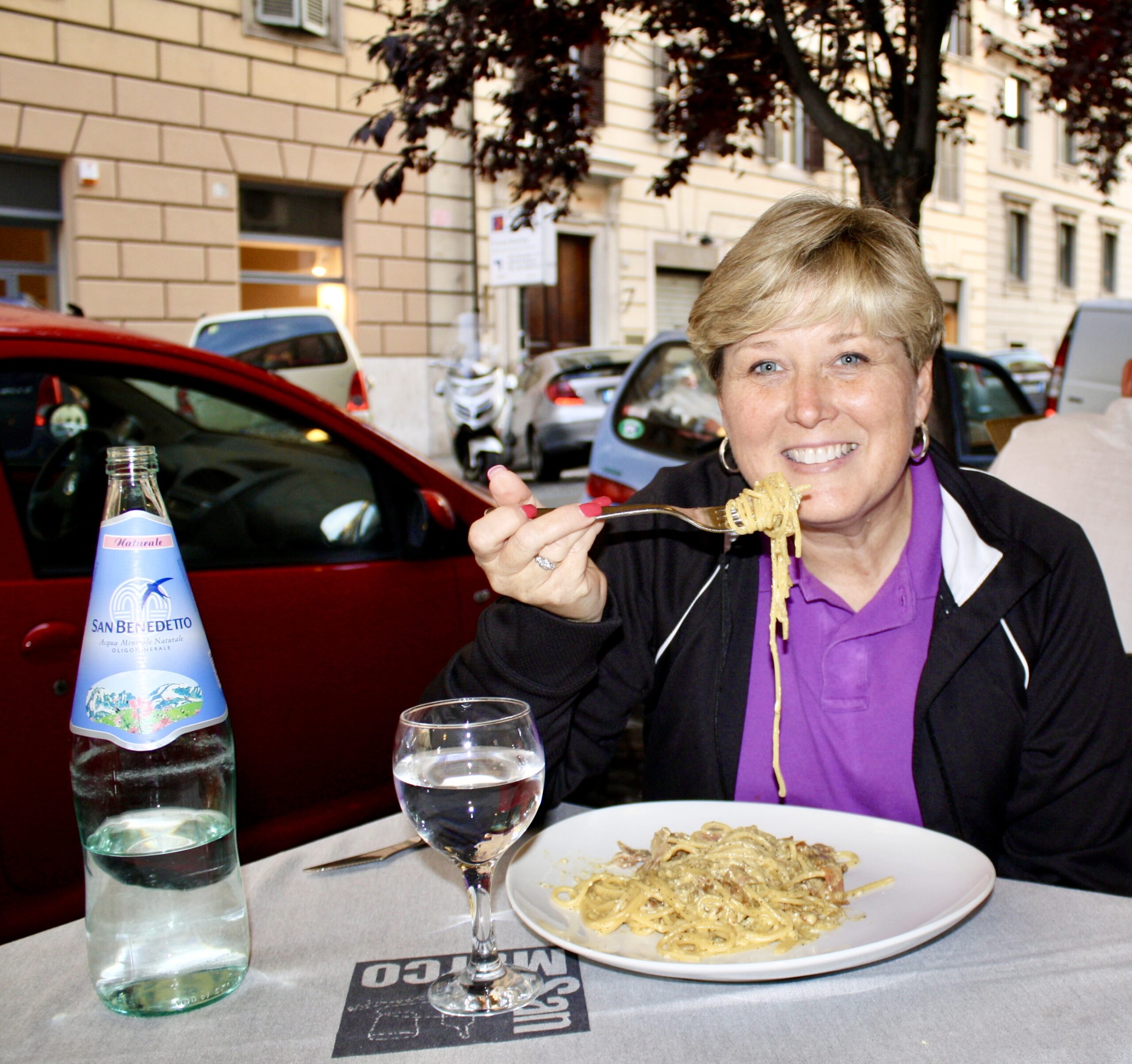
My favorite dishes in Rome were Margherita pizza, pasta Carbonara and lemon gelato! Squisito!
Until next time, keep exploring! And, Ciao for now!
Check out my Rome – Let’s Visit the Eternal City Part One here: Rome – Let’s Visit the Eternal City – Part One
Read all of my Italy travel blogs about Pompeii, Positano, and the Amalfi Coast The Amalfi Coast and Pompeii – Italy, Florence Fabulous Unforgettable Florence – Part One and Fabulous Unforgettable Florence – Part Two, Pisa and the Leaning Tower Pisa and the Leaning Tower – Defying Gravity, and Venice Enchanting Venice – Part One and Enchanting Venice – Part Two.
Tami Kooch
You’ve put so much love & inspiration into your blog. I’ve never wanted to travel outside of the States but now I would love to see Italy. I want to see all this for myself!
Thank you Teri! You would love it (and the food too!)
I am more of a ruins and landscape person instead of a sculpture and painting person but both are worth the time and effort to see. This was a wonderful trip.
Yes it was! Hopefully it was a good mix of both, and we certainly ate well!